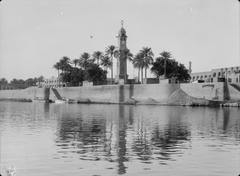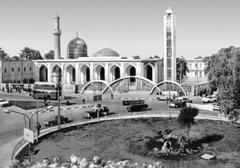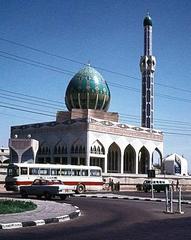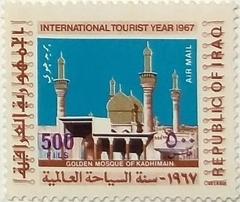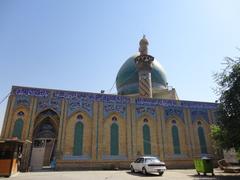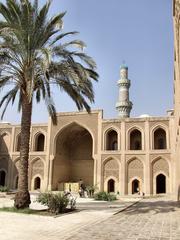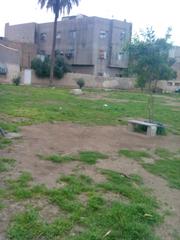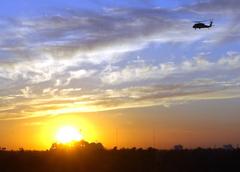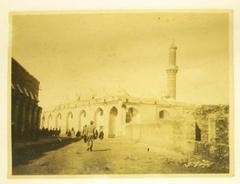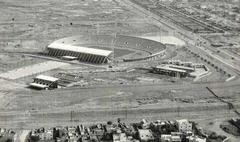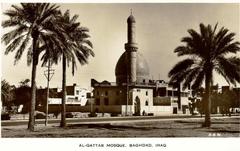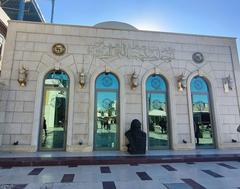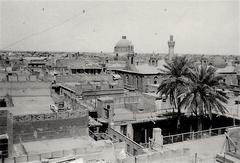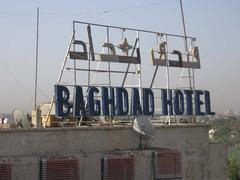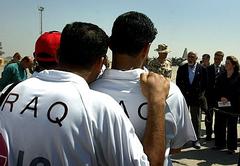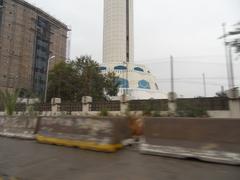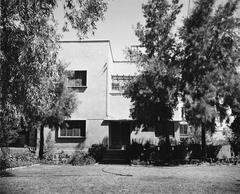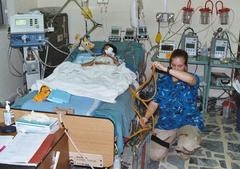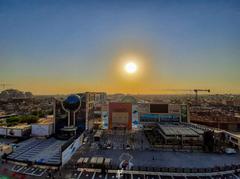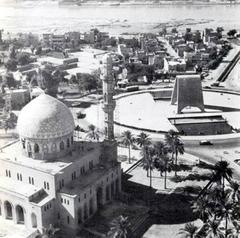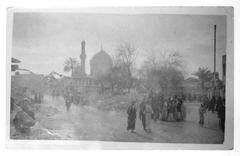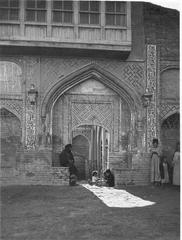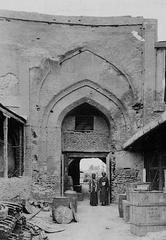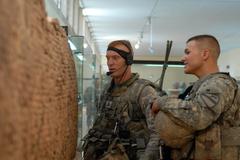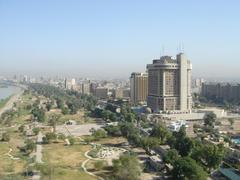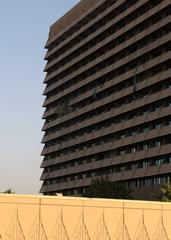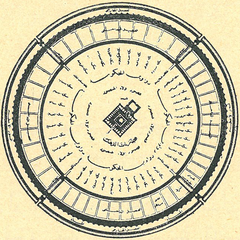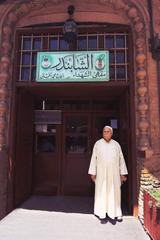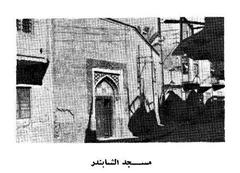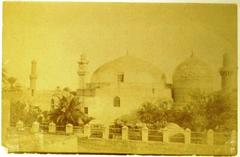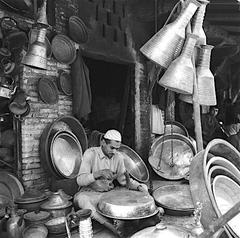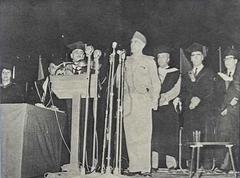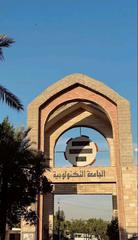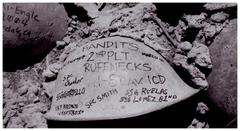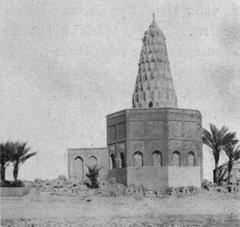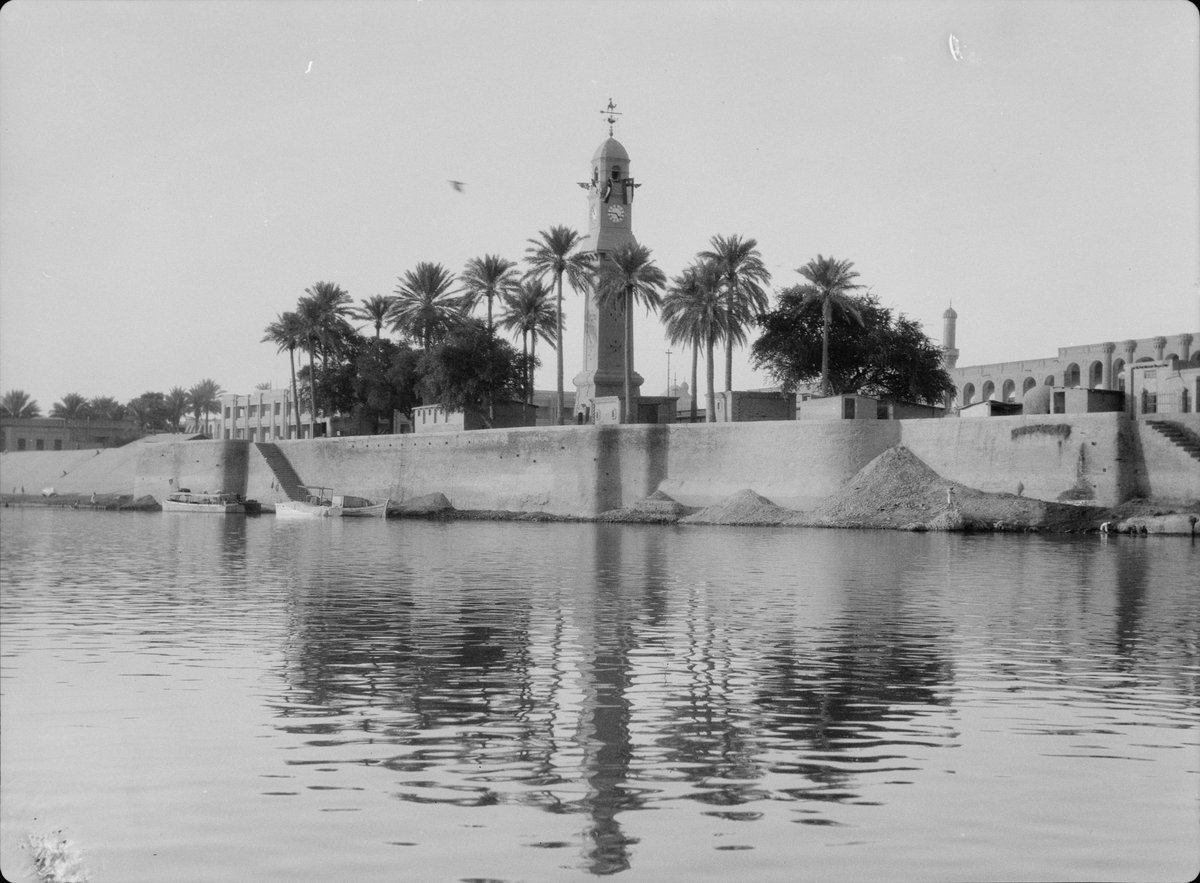
Qushla Baghdad Visiting Hours, Tickets, and Historical Significance Guide
Date: 14/06/2025
Introduction to Qushla Baghdad: History and Visitor Essentials
Situated along the eastern bank of the Tigris River in Baghdad’s historic Rusafa district, the Qushla is one of the city’s most significant Ottoman-era landmarks and a contemporary cultural hub. Constructed in 1861 under Ottoman governor Mehmed Namık Pasha and completed by Midhat Pasha, this landmark originally served as a military barracks and administrative center, cementing Ottoman rule in Baghdad. The name “Qushla,” derived from the Ottoman Turkish “Qishlaq” (meaning soldiers’ quarters), highlights its foundational military role (Visit Iraq Now; Wikipedia).
Featuring a 23-meter-high clock tower—a gift from King George V of Britain—the Qushla’s architecture is a blend of Ottoman and British influences, with arcaded facades, broad courtyards, and traditional design elements. These features offer visitors a vivid glimpse into Baghdad’s layered past (IWH ICESCO; Global Scientific Journal).
Beyond its military origins, the Qushla evolved into a dynamic center for culture and intellectual exchange. Restoration efforts launched in 2012 have rejuvenated the site, making it a must-visit attraction for those seeking to understand Baghdad’s historical and cultural heartbeat. Its location near Al-Mutanabbi Street, the Baghdad Museum, and the Saray Mosque further elevates its appeal (Al Jazeera; TraveloIraq).
Table of Contents
- Introduction
- Ottoman Foundations and Construction
- Architectural Features and the Iconic Clock Tower
- Historical Roles and Transformations
- Decline, Neglect, and Restoration
- Visiting Hours and Ticket Information
- Accessibility and Travel Tips
- Nearby Attractions
- Visuals and Media Recommendations
- Frequently Asked Questions (FAQ)
- Conclusion
- Key Dates and Figures
- Sources
Ottoman Foundations and Construction
The Qushla’s origins are rooted in the Ottoman modernization of Baghdad during the mid-19th century. Initiated by Mehmed Namık Pasha in 1861 and completed by Midhat Pasha, the complex was designed as a military barracks and administrative headquarters (Visit Iraq Now; Wikipedia). Its strategic location near Abbasid-era administrative centers reinforced Ottoman authority in the region.
Architectural Features and the Iconic Clock Tower
Boasting traditional Ottoman elements such as arcaded facades, proportional building heights, and spacious courtyards, the Qushla’s architecture harmonizes with Baghdad’s historic urban landscape (Global Scientific Journal). The 23-meter-high Qushla Clock Tower, added during Midhat Pasha’s tenure, is a prominent feature, symbolizing both the site’s civic role and the era’s technological advancements (IWH ICESCO). The clock regulated the daily routines of Ottoman soldiers and remains a city landmark (Visit Iraq Now).
Historical Roles and Transformations
Ottoman and Early Modern Baghdad
As a military and administrative hub, the Qushla housed thousands of soldiers and government offices (Wikipedia). Its presence anchored Ottoman power, shaping the district’s urban development alongside landmarks like Saray Mosque and Al-Mutanabbi Street (Global Scientific Journal).
British Occupation and the Kingdom of Iraq
Following World War I and the British occupation, the Qushla shifted to new administrative roles. In 1922, its halls housed the first collection of what would become the Iraq Museum, thanks to Gertrude Bell’s advocacy (World History Encyclopedia).
Decline, Neglect, and Restoration
By the late 20th century, neglect, urban encroachment, and conflict led to significant deterioration of the Qushla. The clock tower fell silent, and the structure became overgrown (Global Scientific Journal). Restoration efforts began in 2012, culminating in the building’s reopening and the revival of the clock tower in 2013 (Synkroniciti). Today, the Qushla stands as a revitalized symbol of Baghdad’s resilience.
Visiting Hours and Ticket Information
- Opening Hours: The Qushla is typically open from 9:00 AM to 6:00 PM daily. Hours may vary on public holidays or during events—verify locally before your visit.
- Tickets: Entry is generally free, though some exhibitions or special events may require a nominal fee.
- Guided Tours: Available through local operators or the visitor center. Advance booking is recommended for in-depth historical tours.
Accessibility and Travel Tips
- Getting There: Located in Rusafa near Al-Mutanabbi Street, the Qushla is accessible by taxi or rideshare. Limited public transport is available; arrange transport through your hotel for convenience (TraveloIraq).
- Accessibility: Some areas accommodate visitors with limited mobility, but historic architecture presents challenges. Contact the site in advance to arrange assistance.
- Best Time to Visit: October–April offers comfortable temperatures.
- Safety: The site is generally safe during the day. Stay informed on current advisories, avoid isolated areas, and use reputable transport (Travel Safe Abroad).
Nearby Attractions
- Al-Mutanabbi Street: A vibrant literary hub known for booksellers and cultural cafés.
- Saray Mosque: A historic mosque adjacent to the Qushla.
- Baghdad Museum: Home to archaeological treasures from Mesopotamian, Persian, and Islamic civilizations (Adventures of Lil Nicki).
Visuals and Media Recommendations
Enhance your visit by exploring virtual tours and high-quality photo galleries of the Qushla online. Look for images tagged with “Qushla Baghdad clock tower” and “Baghdad cultural site” for inspiration.
Frequently Asked Questions (FAQ)
What are the Qushla’s visiting hours?
Typically 9:00 AM – 6:00 PM; confirm locally for current times.
Is there an entrance fee?
Entry is usually free; some events may charge a nominal fee.
Are guided tours available?
Yes, bookable through the visitor center or local operators.
Is the Qushla accessible for people with disabilities?
Some areas are accessible, but historic features may pose challenges.
How do I get there?
By taxi or arranged transport; public transit is limited.
Is photography allowed?
Yes, but always request permission before photographing people or private events.
Conclusion
The Qushla is more than a historical monument—it is a living testament to Baghdad’s resilience, bridging Ottoman, British, and modern Iraqi influences. Its restored architecture, iconic clock tower, and renewed cultural programming make it a must-visit for travelers and locals alike. For the latest updates, events, and travel tips, download the Audiala app and connect with our social channels.
Key Dates and Figures
- 1861: Construction begins under Mehmed Namık Pasha.
- Late 1860s–1870s: Completion and expansion by Midhat Pasha.
- 23 meters: Height of the Qushla Clock Tower.
- 1922: Qushla houses the first collection of the Baghdad Archaeological Museum.
- 2012–2013: Major restoration and reopening to the public.
Sources
- The Qushla in Baghdad, IWH ICESCO, 2023
- Qushla, Wikipedia, 2024
- Documentation and Restoration Problems of Qishla and Saray of Baghdad, Global Scientific Journal, 2023
- Inside the Intellectual Hub Where Baghdad’s Spirit Thrives, Al Jazeera, 2018
- The Qushla Clock Tower of Baghdad Restoration, Synkroniciti, 2013
- Baghdad Embarks on Third Phase of Historic Center Development, Lovin Baghdad, 2024
- The Iraq Museum: A Brightness in the Darkness, World History Encyclopedia, 2022
- TraveloIraq: The Qushla Clock, 2024
